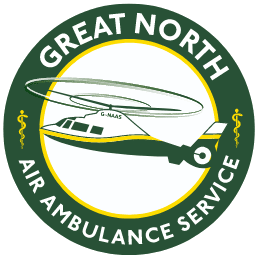One of the highlights of my year was the introduction of two new services on board the aircraft. In January we started carrying blood, allowing us to carry out transfusions on the roadside. In the summer, thanks to a fundraising campaign by the Cumberland News, we also introduced ultrasound scanners onto the aircraft. The scanners let us look inside a patient to quickly determine the best course of action to treat their injuries.
Changes like this ultimately save lives, but they aren’t just dropped in overnight. We have to undergo extensive training to make sure we know exactly what we are doing. In the case of blood particularly, we must be well-drilled before getting to the scene; it’s that serious a procedure. I’m an aircrew paramedic, which means I do not administer the blood myself, but I assist the doctor in doing so, and if we are to work seamlessly, I must be up to speed with what is considered best practice.
We had a film crew with us for several months in the summer. They were filming the second series of Air Ambulance ER, and embedded themselves with us as we went about our work. Our primary concern is always the patient, but if we can show the world what we do and how we do it that can only be of benefit. We are a charity, and therefore rely on the support of the public, so it is an opportunity to provide a little insight into what goes on. I’ll not be watching though, I can’t stand the sight of myself on television!
While I was on shift throughout 2015, the aircraft was activated 174 times. We deal mainly in major trauma and severe illness, so every case has its challenges. One that stands out though was a head on road traffic collision in the Lake District. Our patient, a heavily pregnant woman, was in a perilous condition. She was severely bleeding, and needed immediate attention and then a rapid transfer to hospital. Tragically, her baby died. It was heart-breaking, but the ray of hope was that the mum survived where she probably wouldn’t have done without our intervention. We see some terrible things, but when someone pulls through, when you know you’ve made a difference, that’s when it hits home how important the air ambulance is to the communities it serves.



